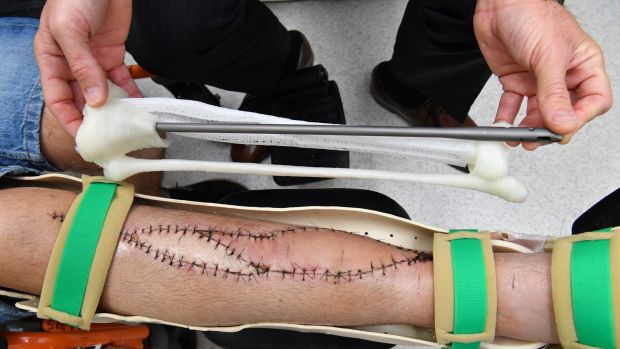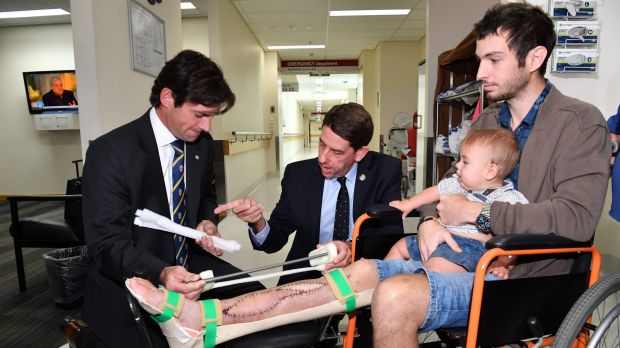In an operation believed to be the first of its kind in the world Reuben Lichter, in Australia, has received a 3D printed shin bone to restore disintegrated bone in his right leg.
The procedure was completed in a series of five operations at Brisbane’s Princess Alexandra Hospital (PAH). The replacement tibia was modeled by a team at Queensland University of Technology (QUT) and 3D printed in Singapore.
Amputate or experiment: “Bam, do it.”
The shin bone in Lichter’s right leg started causing him immense pain at the beginning of this year due to a condition called osteomyelitis, a disease typically caused by bacteria. The condition infected all 36 cm of Lichter’s tibia and was so severe that the only other option would have been to amputate from above the knee.

Speaking to The Sydney Morning Herald, Lichter explained, “[The surgical team] came to me and said there are two options; You can be amputated above the knee, or you can try this experimental stuff that may, or may not work and I said: ‘Bam, do it’.”
He added, “It was not frightening at all […] If there was a chance for me to save my leg and do the things I want to do with my son, then I was going to take it. I wasn’t going to lose my leg without having a fight.”
The patient will walk again
Dr. Michael Wagels was the lead surgeon on the procedure at PAH, and worked closely with researchers at QUT that are pioneering 3D medical treatments in the nation.

To fully replace the tibia bone, Dr. Wagels and collaborators essentially created a kind of scaffold that would encourage regrowth of the body’s cells. It is made form a 3D printed polymer and, for added integration into the body, the team introduced tissue and blood vessels from both of Lichter’s legs into the implant.
Two weeks ago, Lichter completed the final major operation for adding the synthetic bone to his body. The last of five operations conducted over the past six months, the procedure lasted 14 hours.
Lichter is recovering well and doctors recommend that it will take at least 18 months before he can walk again.
The future of medicine
In the future, 3D printing is set to become a standard for custom treatments of this kind, with the fabrication performed by a dedicated department within the treating hospital itself. Dr. Wagels at PAH comments, “We see this operation as an opportunity to make this happen here, locally.”
The Herston Health Precinct in Queensland, is one of the first in Australia to begin development of such a lab, with other facilities arising in Canada and Singapore.
Read about the latest 3D printing medical advances in our free newsletter, on Facebook and on Twitter.
Register for 3D printing jobs here.
Featured image: Reuben Lichter, the man with a 3D printed tibia, and his 8 month old son, transformed by a world first operation at Princess Alexandra Hospital, Brisbane. Photo via The Sydney Morning Herald



